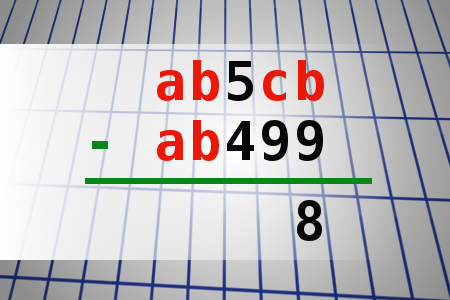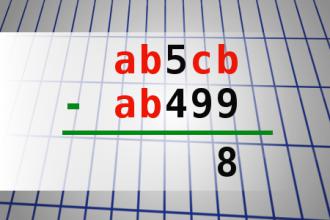Find number abc
If ab5cb - ab499 = 8 find number abc. Multiple solutions may exist.Correct answers: 55
The first user who solved this task is Fazil Hashim.
#brainteasers #math

Few Kids Jokes
Why do bananas have to put on sunscreen before they go to the beach?
Because they might peel.
-----
Q: Why A snail painted an S on the top of his car?
A: So people would say “Look at that S car go!”
-----
Knock knock! Who’s there?
Interrupting cow.
Interrupting cow wh--MOOOOOOOOOO!!!!!!!!
-----
Why did the cow cross the road?
To get to the moo-vies!
found on http://girltomom.com/a-giggle/funny-jokes-for-little-kids

